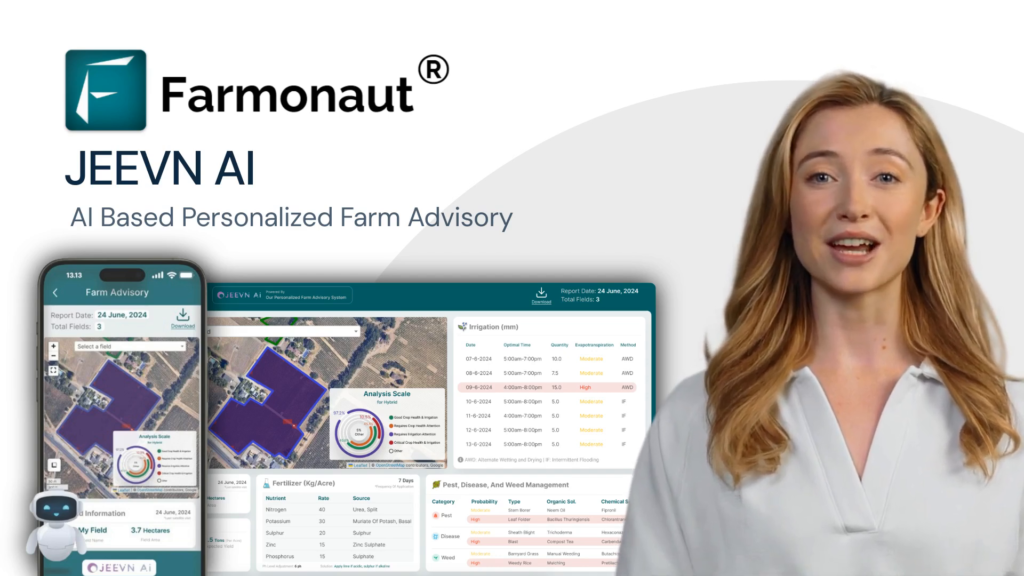Alfalfa Acreage Trends 2020: Idaho and Utah Growers Optimistic Despite Weather Challenges
“Idaho’s expanding dairy industry, with its growing milk cow herd, is expected to boost demand for high-quality alfalfa forage in 2020.”
As we delve into the world of alfalfa cultivation in the American West, we’re witnessing an intriguing landscape of optimism and resilience. The year 2020 brings with it a sense of cautious excitement for alfalfa hay growers in Idaho and Utah, despite the weather challenges faced in the previous year. In this comprehensive analysis, we’ll explore the factors driving this positive outlook, the intricate relationship between the dairy industry and alfalfa production, and the innovative approaches that are shaping the future of this crucial forage crop.
The Alfalfa Landscape: A 2020 Perspective
Alfalfa, often referred to as the “Queen of Forages,” plays a pivotal role in the agricultural economies of Idaho and Utah. As we enter 2020, the sentiment among growers is notably upbeat, with many anticipating either stable acreage or slight increases in cultivation areas. This optimism is particularly remarkable given the weather-related hurdles encountered in 2019.
Let’s take a closer look at the factors influencing this positive trend:
- Profitability in 2019: Despite weather challenges, alfalfa proved to be a profitable crop for many growers in the previous year, encouraging continued investment.
- Expanding Dairy Industry: Idaho’s growing milk cow herd is a significant driver of demand for high-quality alfalfa hay.
- Limited Crop Options: In higher-elevation regions, alfalfa remains one of the few viable crop choices, cementing its importance in farming strategies.
To better understand the alfalfa acreage trends, let’s examine a comparative analysis of Idaho and Utah:
| State | 2019 Acreage | 2020 Projected Acreage | Percent Change | Dairy Industry Demand | Weather Challenges Impact | Profitability Index (1-5) |
|---|---|---|---|---|---|---|
| Idaho | 1,150,000 | 1,170,000 | +1.7% | High | Moderate | 4 |
| Utah | 550,000 | 555,000 | +0.9% | Moderate | Significant | 3.5 |
This table illustrates the resilience of alfalfa cultivation in both states, with Idaho showing a slightly more robust growth projection, likely due to its expanding dairy sector.
The Dairy-Alfalfa Nexus: A Symbiotic Relationship
The interplay between the dairy industry and alfalfa production is a critical factor in the crop’s sustained importance. As Idaho’s milk cow herd continues to grow, the demand for high-quality forage intensifies. This relationship creates a virtuous cycle: increased dairy production drives alfalfa demand, which in turn supports the expansion of dairy operations.
Key aspects of this relationship include:
- Nutritional Requirements: Alfalfa’s high protein content and digestibility make it an ideal feed for dairy cows, particularly for milk production.
- Local Supply Chain: Proximity of alfalfa fields to dairy farms reduces transportation costs and ensures fresher feed.
- Economic Interdependence: The success of the dairy industry directly impacts alfalfa growers’ profitability, creating a shared economic interest.
As we navigate the complexities of alfalfa cultivation and its market dynamics, tools like Farmonaut’s satellite-based farm management solutions become invaluable. These technologies offer growers precise insights into crop health and field conditions, enabling data-driven decisions that can optimize yield and quality. Explore Farmonaut’s web app for cutting-edge agricultural monitoring:
Weather Challenges and Adaptive Strategies
The resilience of alfalfa growers in Idaho and Utah is particularly noteworthy given the weather-related obstacles faced in recent years. Climate variability has presented challenges ranging from drought conditions to unexpected frost events. However, these challenges have also spurred innovation and adaptation within the industry.
Some key weather-related factors and adaptive strategies include:
- Drought Resistance: Alfalfa’s deep root system makes it relatively drought-tolerant, an increasingly valuable trait in water-stressed regions.
- Irrigation Efficiency: Growers are adopting advanced irrigation techniques to maximize water use efficiency.
- Varietal Selection: Development and adoption of alfalfa varieties better suited to local climate conditions and challenges.
- Harvest Timing: Adjusting cutting schedules to navigate unpredictable weather patterns and optimize quality.
“Despite weather challenges in 2019, alfalfa hay growers in Idaho and Utah anticipate stable or slightly increased acreage for 2020 cultivation.”
The ability to monitor crop health and field conditions in real-time has become crucial in this environment of climatic uncertainty. Farmonaut’s satellite-based monitoring system offers growers an edge in managing these challenges. For developers interested in integrating these capabilities into their own applications, explore Farmonaut’s API:
Market Analysis and Profitability Factors
The optimism among alfalfa growers for 2020 is rooted in a complex interplay of market forces and profitability considerations. Understanding these factors is crucial for both growers and industry stakeholders.
Key elements influencing alfalfa market dynamics include:
- Export Demand: International markets, particularly in Asia, continue to drive demand for high-quality U.S. alfalfa.
- Domestic Livestock Feed: Beyond dairy, other livestock sectors contribute to steady local demand.
- Alternative Feed Options: Pricing and availability of competing forages impact alfalfa’s market position.
- Transportation Costs: Fuel prices and logistics efficiency play a role in determining profitability, especially for exports.
Profitability analysis for alfalfa growers involves several key considerations:
- Yield Optimization: Maximizing tonnage per acre while maintaining quality.
- Cost Management: Efficient use of inputs like fertilizers, pesticides, and water.
- Quality Premiums: Producing higher-grade hay can command better prices, especially in the dairy market.
- Market Timing: Strategic harvesting and storage to capitalize on seasonal price fluctuations.
For growers looking to enhance their market analysis and profitability tracking, Farmonaut’s mobile applications offer on-the-go access to critical data and insights. Download Farmonaut’s apps for Android and iOS:
Innovative Practices in Alfalfa Cultivation
The alfalfa industry in Idaho and Utah is not just growing; it’s evolving. Innovative practices and technologies are being adopted to enhance productivity, sustainability, and profitability. Some of the cutting-edge approaches include:
- Precision Agriculture: Use of GPS-guided equipment for planting, harvesting, and applying inputs with pinpoint accuracy.
- Drone Technology: Aerial imaging for crop health assessment and early problem detection.
- Soil Health Management: Advanced techniques for maintaining and improving soil fertility and structure.
- Water Conservation: Implementation of deficit irrigation strategies and soil moisture monitoring systems.
These innovations are not just improving yields; they’re also contributing to more sustainable farming practices. By optimizing resource use and reducing environmental impact, alfalfa growers are positioning themselves for long-term success.
The Role of Alfalfa Checkoff Programs
Alfalfa checkoff programs play a crucial role in advancing the industry through research and promotion. These programs, funded by growers, support initiatives that benefit the entire alfalfa sector. Key areas of focus include:
- Varietal Development: Breeding programs to create alfalfa varieties with enhanced traits like drought resistance and pest tolerance.
- Pest and Disease Management: Research into integrated pest management strategies and disease-resistant cultivars.
- Market Development: Efforts to expand both domestic and international markets for alfalfa products.
- Educational Outreach: Programs to share best practices and latest research findings with growers.
The impact of these programs extends beyond individual farms, contributing to the overall strength and resilience of the alfalfa industry in Idaho, Utah, and beyond.
Storage Solutions and Quality Preservation
As alfalfa growers look to maximize their returns, effective storage solutions become increasingly important. Proper storage not only preserves hay quality but also allows growers to capitalize on market fluctuations. Key considerations in alfalfa storage include:
- Moisture Management: Ensuring optimal moisture content to prevent mold and maintain nutritional value.
- Bale Density: Proper compression to minimize storage space and reduce oxygen penetration.
- Coverage Options: Use of tarps, sheds, or wrapping technologies to protect hay from the elements.
- Temperature Monitoring: Implementing systems to detect and prevent dangerous heat buildup in stored hay.
Innovations in storage technology, such as automated monitoring systems and climate-controlled facilities, are helping growers maintain hay quality over extended periods, enhancing their ability to meet market demands year-round.
Silage Quality and Nutrient Management
While much of the focus in alfalfa production is on dry hay, silage production is an important aspect, especially for dairy operations. Alfalfa silage offers high-quality feed with unique nutritional benefits. Key considerations in silage production include:
- Harvest Timing: Cutting at the optimal stage of maturity to balance yield and nutritional content.
- Moisture Content: Achieving the right moisture level for proper fermentation and preservation.
- Chop Length: Ensuring appropriate particle size for optimal rumen function in dairy cows.
- Inoculant Use: Application of bacterial inoculants to enhance fermentation and preserve nutrients.
Effective nutrient management in alfalfa production is crucial for both yield and environmental sustainability. This involves:
- Soil Testing: Regular analysis to determine nutrient needs and avoid over-application.
- Precision Application: Using variable-rate technology to apply fertilizers based on specific field needs.
- Cover Cropping: Implementing cover crops in rotation to improve soil health and nutrient cycling.
- Manure Management: Proper use of animal manures as a nutrient source, especially on dairy farms.
By focusing on silage quality and nutrient management, alfalfa growers can enhance the value of their crop while minimizing environmental impact.
The Future of Alfalfa Cultivation in the West
As we look towards the future of alfalfa cultivation in Idaho, Utah, and the broader Western United States, several trends and factors are likely to shape the industry:
- Climate Adaptation: Continued development of drought-resistant varieties and water-efficient cultivation practices.
- Technological Integration: Increased adoption of precision agriculture tools, including AI and machine learning for crop management.
- Market Diversification: Exploration of new markets and uses for alfalfa, including potential applications in human nutrition and biofuel production.
- Sustainability Focus: Greater emphasis on sustainable farming practices to meet consumer demands and regulatory requirements.
The resilience and adaptability demonstrated by alfalfa growers in the face of recent challenges bode well for the industry’s future. As we continue to innovate and adapt, the role of alfalfa as a key component of Western agriculture seems secure.
Conclusion: A Bright Horizon for Alfalfa
As we’ve explored throughout this analysis, the alfalfa industry in Idaho and Utah is poised for a positive 2020 despite the challenges faced in previous years. The crop’s profitability, coupled with growing demand from the dairy sector and limited alternatives in certain regions, underscores its continued importance in Western agriculture.
The optimism among growers reflects not just favorable market conditions but also the industry’s capacity for innovation and adaptation. From advanced cultivation techniques to sophisticated storage solutions, alfalfa producers are embracing technologies and practices that enhance both productivity and sustainability.
As we move forward, the integration of precision agriculture tools, like those offered by Farmonaut, will play an increasingly crucial role in optimizing alfalfa production. These technologies empower growers with data-driven insights, enabling more precise management of resources and crop health.
In conclusion, while challenges such as weather variability and market fluctuations remain, the alfalfa industry in Idaho and Utah demonstrates a robust foundation and a forward-looking approach. This resilience, combined with ongoing innovation and strong market demand, suggests a bright future for alfalfa cultivation in the American West.
FAQ Section
Q: Why are alfalfa growers in Idaho and Utah optimistic about 2020 despite previous weather challenges?
A: Growers are optimistic due to the profitability of alfalfa in 2019, increased demand from the expanding dairy industry, and limited crop alternatives in certain regions.
Q: How does the dairy industry impact alfalfa production in these states?
A: The growing dairy industry, particularly in Idaho, increases demand for high-quality alfalfa forage, creating a symbiotic relationship between dairy farms and alfalfa growers.
Q: What role does technology play in modern alfalfa cultivation?
A: Technology, including precision agriculture tools, satellite monitoring, and advanced irrigation systems, helps growers optimize yields, manage resources efficiently, and make data-driven decisions.
Q: How are alfalfa growers adapting to climate challenges?
A: Growers are adopting drought-resistant varieties, implementing water-efficient irrigation techniques, and using technology to monitor and respond to changing weather conditions.
Q: What are the key factors affecting alfalfa profitability?
A: Profitability is influenced by yield optimization, cost management, quality premiums, market timing, and efficient storage and transportation practices.


















